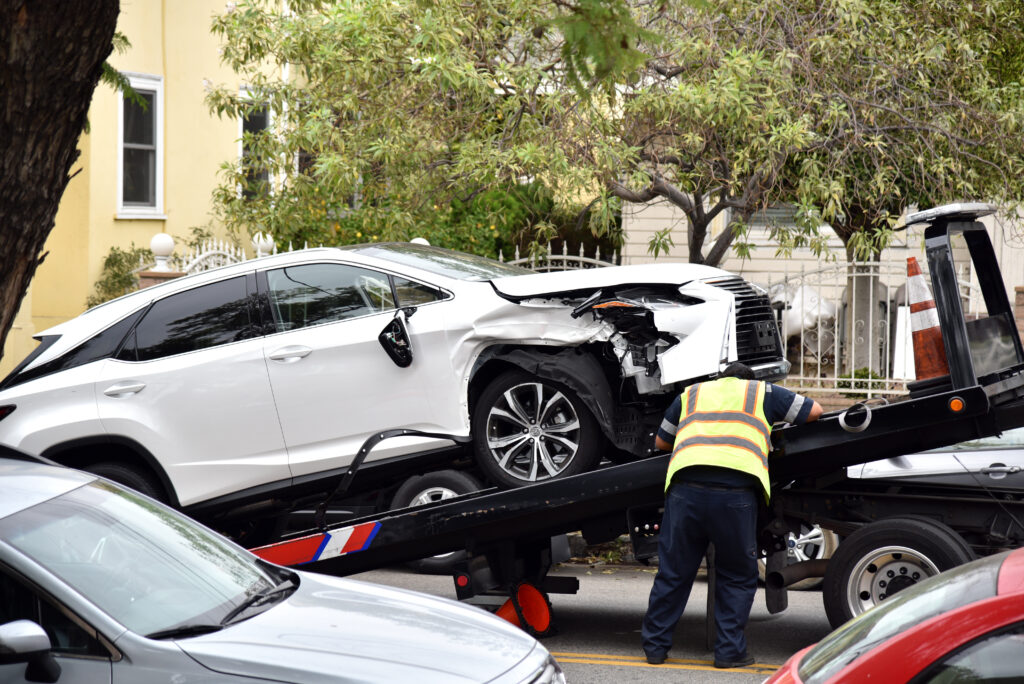How Many Automobile Accidents in the United States?
More than 6 million car accidents occur each year across the United States. One automobile accident happens every five seconds, resulting in 2.5 million injuries at a cost of approximately $230 billion dollars to Americans annually. Accidents in the U.S. can be broken down into demographic populations by state, age, and gender, as well as by accident type and vehicles involved. Crash reconstruction also provides information on the top reasons accidents occur.
How many automobile accidents in the United States result in a fatality?
Motor vehicle accidents continue to be a leading cause of death in the United States, with 115 people dying each day on America’s roadways. In 2021, there were 39,508 motor vehicle accidents resulting in one or more fatality death in the U.S. according to the Insurance Institute for Highway Safety.
Fatalities are figured based on rates per capita, or the number of people in the population, and per vehicle miles traveled annually. For every 100,000 U.S. citizens, there were 12.9 traffic accident-related deaths in 2021. That number is equivalent to 1.37 deaths per every 100 million miles traveled that year.
Where are automobile accident fatalities happening in the United States?
The geographic location of motor vehicle accidents across the country provides valuable information, such as the condition of state roadways and differences in rural and urban traffic patterns.
By State
In 2021, the United States had a population of more than 330 million people driving an estimated 3 million miles annually:
- Rhode Island had the lowest per capita fatality rate of any state at only 5.7 deaths per 100,000 drivers.
- Mississippi had the highest, with 26.2 fatalities per 100,000.
- Deaths per every 100 million miles traveled were lowest in Massachusetts with 0.71 deaths and highest in South Carolina (2.08).
- California, one of the largest state populations in the country, had the most fatal car crashes in 2021 with 3,983 wrecks.
- The District of Columbia, which has a small population, had the fewest number of fatal wrecks.
By Vehicle Type
States also differ by the type of vehicles involved in fatal accidents. This is likely due to the climate and terrain motorists face in individual states, which may influence the vehicles or modes of transportation they choose. For example:
- Wyoming led in percentage of deaths by SUVs or pick up trucks, with 47 percent of accidents involving these types of vehicles. It also had the lowest percentage of deaths involving cars (18 percent).
- Forty-nine percent of fatality accidents in Rhode Island involved at least one car, while only 14 percent involved an SUV or pick up truck.
- Hawaii was low in deaths involving both cars (14 percent) and SUVs and pick up trucks (18 percent), but high in pedestrian vs. vehicle deaths (27 percent) and motorcycle accidents (35 percent).
- The District of Columbia had the highest percentage of crash deaths involving bicycles (7 percent) and pedestrian accidents (44 percent).
By Accident Type
The types of accidents causing fatalities and the number of vehicles involved vary widely. Fifty-two percent of overall deaths in the United States caused by motor vehicle accidents only involved a single vehicle.
- Montana and Hawaii tied for highest percentage (70 percent) of single-vehicle fatality accidents.
- Nebraska had the highest percentage (57 percent) of multiple vehicle crashes.
By Population Density
Only forty percent of accidents resulting in a death in 2021 happened in rural areas. Vermont, South Dakota, and Wyoming had the highest percentage of rural traffic deaths, while Massachusetts, Maryland, and New Jersey had the lowest.
By Location to Home
The National Highway Traffic Safety Association reports that most fatal motor vehicle accidents occur within 25 miles of the victims’ home at speeds less than 40 mph.
Which demographic of Americans are most likely to be involved in a traffic fatality?
Gender and age are two predictive factors in U.S. traffic deaths. Men are more likely to die in a motor vehicle accident than women. Although young drivers ages 16 to 20 only account for a small percentage of licensed drivers, they are involved in the highest number of fatal motor vehicle accidents overall:
- 15 to 24-year-olds had the highest number of collisions with fixed objects.
- Teen drivers make up 6.3 deaths per 100,000 compared to 3.8 per 100,000 for all other age groups.
- Drivers over 75 have the highest collision rate with other vehicles with 11.9 percent of multiple-vehicle accidents, compared to an average of 6.1 percent for other age groups.
What are the top causes for automobile accidents in the U.S.?
Ninety-eight percent of crashes are caused by human error. The U.S. General Services Administration Office of Motor Vehicle Management reports that the top six human driver errors resulting in motor vehicle accidents include:
- Failure to Wear a Safety Belt—It’s estimated that one American dies each hour as a result of not wearing a seat belt while driving or riding as a passenger in a vehicle. Less than half of fatally injured vehicle occupants are found wearing a seatbelt following a crash.
- Excessive Speed—The difference in force exerted in a crash more than doubles when a vehicle’s speed increases from 40 mph to 60 mph.
- Distracted Driving—Motorists who eat, drink, smoke, play with the radio, or talk and text while driving contribute significantly to the number of automobile accidents each year. Driving tired also leads to roughly 100,000 accidents annually.
- Mistaking Another Driver’s Intentions—Failing to recognize turn signals or signaling intentions to merge or turn is a top cause of wrecks.
- Tailgating or Following Too Close—Rear-end accidents occur when drivers following too closely hit the vehicle in front of them while it’s braking to slow down or stop.
- Failing to Check Traffic Before Crossing or Pulling Out—T-bone accidents happen when a driver fails to check for oncoming traffic before making a left-hand turn or crossing a busy intersection.
If you’ve been injured in an automobile accident in the United States, you may be dealing with medical expenses, damaged property, and lost wages. You could be eligible to receive compensation for your economic losses. A personal injury attorney can explain your options and help you take the first step toward financial recovery from your accident.
SOURCES
Insurance Institute for Highway Safety
U.S. General Services Administration Office of Motor Vehicle Management
National Highway Traffic Safety Association (NHTSA)









